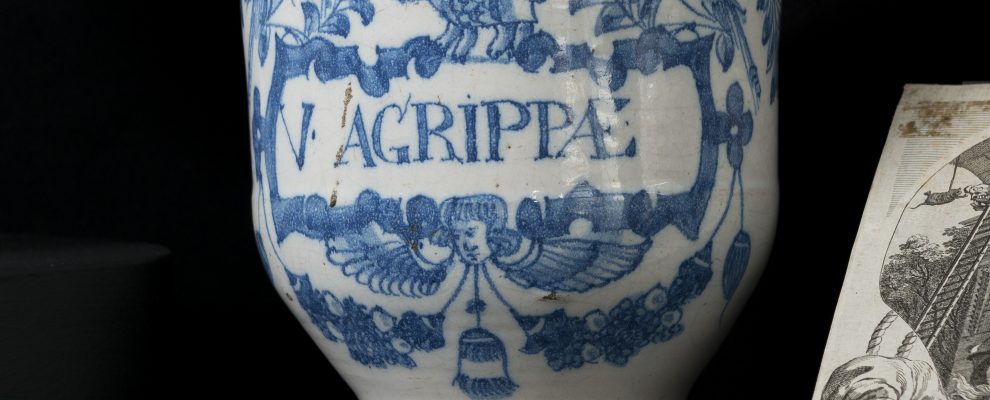Georgian Britain’s preoccupation with health and disease provided abundant trade for apothecaries. Apothecary shops selling a variety of medicines and drugs were plentiful in the eighteenth century, even in regional centres such as York.
Apothecaries worked on the frontline of healthcare and were often the first port of call for an ailing client. In order to entice customers, apothecaries filled their shop windows with ornate jars and colourful bottles containing medicines. Once inside customers were confronted with ordered shelves and display cases packed with expensive and exotic tonics, powders, creams and elixirs. In a highly competitive medical market many apothecaries also vigorously marketed their unique ‘cure-alls’ in newspapers, pamphlets and through trade cards, promising unrivalled results for a bewildering array of illnesses. Apothecaries both diagnosed and treated the sick with various medicines, including bespoke remedies for individual clients. Their knowledge and discretion was often guaranteed by the ‘extravagant’ prices they commanded.
However, whilst the profession was recognised as a ‘genteel business… in great vogue of late years’, suspicions persisted that they were nothing more than quacks. An old joke stating ‘I felt unwell – I resolved to get better – I took medicine – I died’ reflects the concern that many so-called modern medicines were actually harmful to customers. The standard use of mercury to cure venereal diseases is a well-known example.
Viscount Fairfax was a frequenter of apothecaries, regularly spending significant sums of money on remedies for himself, his daughter Anne and even his servants. His nephew Francis Bredall was registered with the Worshipful Society of Apothecaries of London. A 1753 bill from Bredall illustrates the range and scale of products that Fairfax purchased on a monthly basis, including ‘a bitter stomatick mixture for swerall bones’, ‘pot of laxative’, ‘powder of myrrh’, a ‘purging potion’ for his daughter, and an ‘opening draught with rhubarb’ for the laundry maid.
Further reading:
Allan Ingram and Leigh Wetherall Dickson (eds.), Disease and Death in Eighteenth-Century Literature and Culture: Fashioning the Unfashionable, Palgrave, 2016.
Jennifer Evans and Sara Read, Maladies and Medicine: Exploring Health and Healing, 1540-1740, Pen & Sword History, 2017.
Further links:
www.fashionablediseases.info/Blog

Source: Consuming Passions: Shopping for Luxury in Georgian Britain (Fairfax House, 2015)
